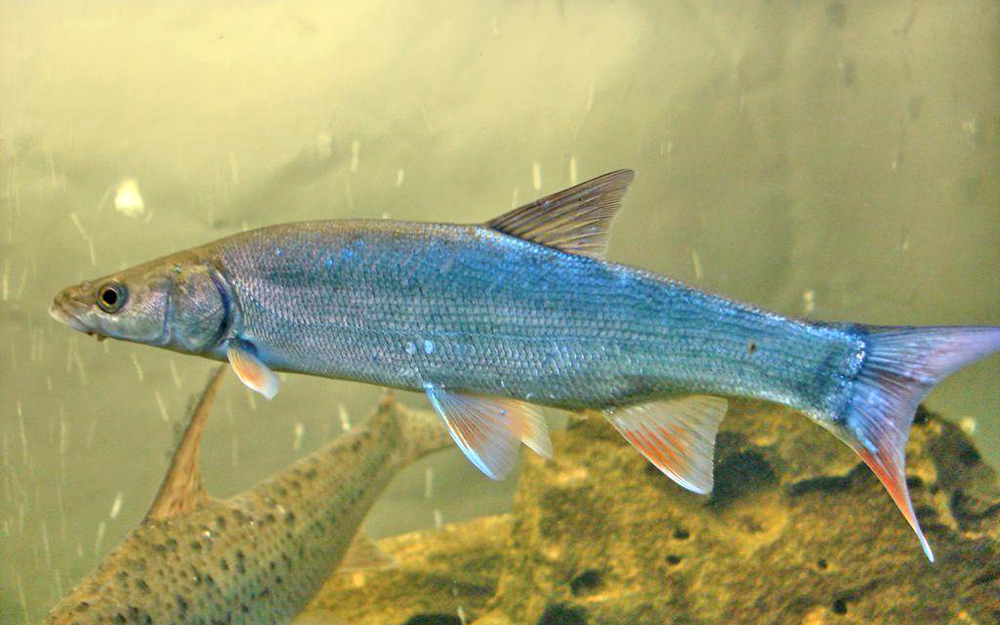Flathead asp
(Pseudaspius leptocephalus)

Classification
BRIEF DESCRIPTION AND TAXONOMY
The body is elongated, compressed laterally, and covered in small scales. The back is bluish-grey; the dorsal fin is grey. Pectoral fins are yellow and ventral, anal, and caudal fins are red. The head is wedge-shaped and slightly flattened. The mouth is terminal and wide, and the lower jaw projects beyond the upper jaw and has a small tubercle. The dorsal fin is short and without spines; shifted rearward.
D III 6–7; A III 8–9; GR 9–10; ll 91–102
DISTRIBUTION
This is a freshwater species, tolerant of brackish water. It is found in the Amur basin from the headwaters to the Amur estuary. It is also present in rivers on north-western Sakhalin.
BIOLOGY AND ECOLOGY
The species is a typical predator and is usually found in the channel near gravel bars. It switches to a fish diet at a length of 3 cm, consisting mainly of sharpbellies and gudgeons. The nutritional spectrum of adult fish is wider, and they continuing feeding in winter. The species attains sexual maturity in its 5th year of life and at a length of 25–30 cm. Fecundity ranges from 23,000 to 60,000 eggs. Spawning begins in late
May and completes by the end of June.
POPULATION SIZE AND LIMITING FACTORS
This is a common commercial species in the Amur basin. The main limiting factors are fishing and natural causes (mainly hydrological regime in water bodies -water level and temperature). The population is stable. It is targeted for commercial, recreational, and sport
fishing. The annual catch in the Amur basin is about 100 tons.
Author: E.I. Barabanschikov
From the book: Fish of the Amur river
amurinfocenter.org/en/directions/water/fish-of-the-amur-river/










